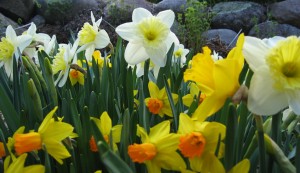Waning Days of Beltane Waning Dyan Moon
We near midsummer; it’s only 15 hours away. The Summer Solstice, the hot sister of my favorite holiday, the Winter Solstice, comes to Minnesota at 12:47 am tomorrow, the early hours of father’s day.
To celebrate I plan to work outside in the garden and do some pre-Raphaelite reading, maybe look for a PRB take on midsommer.
To start, this morning I checked on the bees. There are many, many more bees than came in the small wire and wood box in April. They come and go, searching the area for nectar and finding plenty at this time of year with the bumper crops still ahead. Nectar flow precedes honey flow and we are hind leg deep in pollen and nectar.
The bees did not meet the threshold of 8 sides substantially covered with brood that indicates the need for another hive box. Maybe next week.
There must be a trick to getting the smoker lit and working. It has challenged my bee-keeping more than the bees so far. In order to use it you have to a fuel burning, then smother it, but not put out the coals so the fuel will continue to smolder, producing smoke for the duration of your hive check.
Like many learning curves this one imposes a double penalty. While taking time to keep the smoker lit and producing, I can not work the hives. Once in the hives, which I work slowly anyway because I’m still learning, the smoker punking out (pun!) puts me at risk from angry bees. Meanwhile back to the smoker which means I’m not checking the hive. Normal learning process. Frustrating and exhilirating.
Now for some deadheading, trellis building and potato and beet mounding. Check you on the flipside.

 recall. The furled hosta leaves that come up in a tightly packed spiral have begun to uncurl. Dicentra have full leaves now, though no flowers yet. A few iris have pushed blossoms up, a purple variety I particularly like opens early. Even though they will not bear flowers until July the true lilies have already grown well past six inches, some with gentle leaves and others with leaves that look like a packed icanthus, an Egyptian temple column rising out of this northern soil.
recall. The furled hosta leaves that come up in a tightly packed spiral have begun to uncurl. Dicentra have full leaves now, though no flowers yet. A few iris have pushed blossoms up, a purple variety I particularly like opens early. Even though they will not bear flowers until July the true lilies have already grown well past six inches, some with gentle leaves and others with leaves that look like a packed icanthus, an Egyptian temple column rising out of this northern soil.